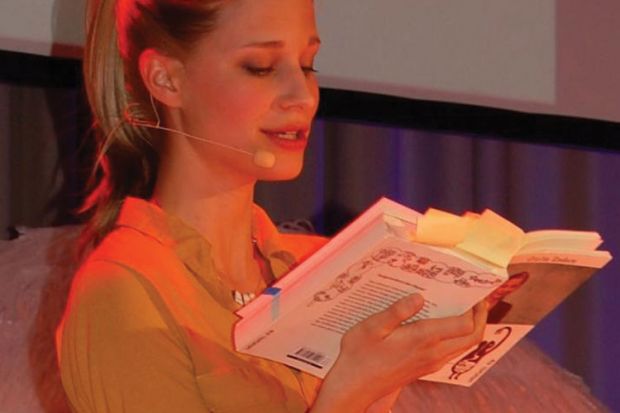There is always room in the market for a bit of healthy and charmingly presented taboo-breaking. In Germany, Giulia Enders, a young medical student, is basking in the extraordinary success of her book, Darm mit Charme: Alles über ein Unterschätztes Organ (Intestine with Charm: Everything about an underrated Organ). Not only is the book a best-seller of considerable proportion, there is already an audiobook as well, and Ms Enders is a much sought-after celebrity in Germany.
The success of the doctoral student from Goethe University, Frankfurt demonstrates the need for, and appeal of, popular medical and scientific works that have a light touch. Academic research can be a popular hit.
The book is a very graphic but chatty and witty foray into the world of bowels and the associated movements. Rude words are used without restraint, and a good deal of humour leavens the work. Fans of the book and its author find it entertaining, informative and refreshing to have this awkward subject given such frank and funny treatment.
The reader gleans advice on how to sit in order to get the best out of the proceedings – in the most literal sense. There are categorisations of the form and consistency of you-know-what, and tips on how to eat so as to make everything come out optimally. Explanations are also provided, for instance, on why some people take two minutes and others 10, or why some people go twice a day and others only now and then.
The genesis of the book can be traced back to a “Science Slam” in 2012, at which young scientists presented popular descriptions of their research in a competitive forum. The idea was to be as comprehensible and entertaining as possible. Together with her sister Jill, who has a talent for drawing amusing cartoons, Ms Enders produced and delivered a 10-minute PowerPoint presentation. The audience loved it. She won the slam, and was soon approached by a publisher about writing a book on the subject.
She is now also an “internet star”, according to one medical newspaper, and her “illuminating presentation” on YouTube has been viewed 500,000 times.
Predictably, not everyone is enthusiastic about the book. One commentator has argued that taboos perform a social function and that not everything has to be painted in bright colours. Others feel that her popular science approach does not provide sufficient rigour to be of any real medical use. One online commentator even remarked that “it is a sign of a society on the brink of collapse when best-sellers and people are more concerned with the content of their intestines than with their civic duties and obligations”.
Finally, Ms Enders was criticised for free-riding in the wake of Charlotte Roche’s best-selling novel Wetlands, which opens with a sentence about haemorrhoids. Other German works on the theme include one whose title translates to Dark Substances: The History of Shit.
Despite this illustrious literature, as in most other fields, an up-to-date and compellingly presented new perspective is always welcome. As far as the German public are concerned, this book and its researcher author live up to the title.
Register to continue
Why register?
- Registration is free and only takes a moment
- Once registered, you can read 3 articles a month
- Sign up for our newsletter
Subscribe
Or subscribe for unlimited access to:
- Unlimited access to news, views, insights & reviews
- Digital editions
- Digital access to THE’s university and college rankings analysis
Already registered or a current subscriber? Login

